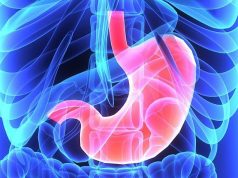High levels of sulfate, vanadium, molybdenum in water supplies may increase the risk for nontuberculous mycobacteria pulmonary infections
By Lori Solomon HealthDay Reporter
FRIDAY, Sept. 1, 2023 (HealthDay News) — Naturally occurring and anthropogenic water-quality constituents may heighten the risk for nontuberculous mycobacterial (NTM) pulmonary disease in people with cystic fibrosis, according to a study published in the October issue of Environmental Epidemiology.
Ettie M. Lipner, from the U.S. National Institutes of Health in Bethesda, Maryland, and colleagues identified water-quality constituents that influence the risk for NTM pulmonary infection in persons with cystic fibrosis in the United States. Data from the Cystic Fibrosis Foundation Patient Registry (2010 to 2019) were linked to surface water data extracted from the Water Quality Portal for each patient ZIP code.
The researchers identified 484 Mycobacterium avium complex (MAC) cases, 222 Mycobacterium abscessus cases, and 2,816 NTM-negative cystic fibrosis controls living in 11 states. For every standardized unit increase in the log concentration of sulfate and vanadium in surface water at the county level, the odds of infection increased by 39 and 21 percent, respectively, among persons with cystic fibrosis with MAC versus cystic fibrosis-NTM-negative controls. For M. abscessus, every standardized unit increase in the log concentration of molybdenum increased the odds of infection by 36 percent.
âWhile more research is needed to confirm our results in other geographic regions of the United States, these findings may be useful to inform susceptible patients of their risks in residing in specific regions,â the authors write.
Abstract/Full Text (subscription or payment may be required)
Copyright © 2023 HealthDay. All rights reserved.








